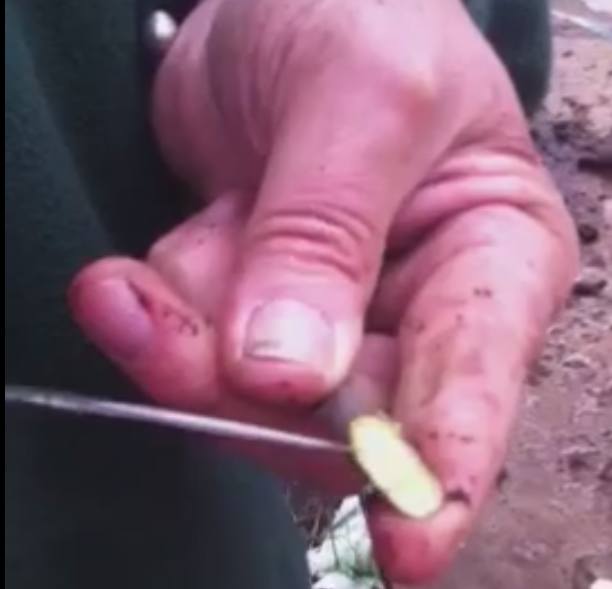 In these videos Ian Sturrock who grows rare, heritage Welsh fruit trees at his nursery near Bangor shows us exactly how to graft fruit trees using the whip and tongue graft method.
In these videos Ian Sturrock who grows rare, heritage Welsh fruit trees at his nursery near Bangor shows us exactly how to graft fruit trees using the whip and tongue graft method.
There are two parts to a fruit tree when you buy it, the rootstock and the fruiting tree. The rootstock controls how vigorous the tree will be, how large it will grow. The fruiting wood provides the variety – what type of apple or pear etc it is.
Scion Wood
The fruiting tree wood is known as Scion Wood. The scion wood is grafted to the rootstock.
Whip & Tongue Grafting Method
The usual method of joining the rootstock to the scion wood is by a whip & tongue graft. The process starts by harvesting scion wood when it is dormant in mid-winter. The scion wood is taken from the thin branches.
In winter, the sap has gone back into the lower trunk and rootstock leaving our scion wood empty – which is why it is known as ‘hungry wood’.
The rootstocks are usually bought in from specialist nurseries and supplied as small trees. Ian buys his rootstocks in lots of 1,000 but you can buy small quantities.
Cambium Layer – Cambium Cells
Under the bark of the tree is the cambium layer. The cambium layer is made up of repair cells – stem cells – and will happily fuse with cambium cells of another tree. When grafting it is critical to join cambium to cambium to fuse the scion to the rootstock.
How to Make a Whip & Tongue Graft
Both pieces of wood have a slit cut into them and when pressed together these join and callous over forming one branch.
To hold them together whilst they’re fusing they need some additional help. They used to be wrapped, tied with raffia and sealed with grafting wax (Tenax Wax) but there are more modern methods now as Ian explains.
- Specialist grafting tape
- Grafting rubbers
- Parafilm tape (AKA medal tape or buddy tape)
After Grafting
Once the rootstock and scion are grafted together, Ian plants the trees into pots to grow on. Once the tree starts to grow, the sap will rise into the scion’s ‘hungry wood’ and the scion wood will grow on. Often the rootstock will attempt to grow branches but these are not wanted. They will not be producing the fruit we want.
To stop this the growth from the rootstock is rubbed out before it has a chance to establish. The scion wood may try to form a number of branches when only one leader is required. These excess growths will also need to be rubbed out as shown in the second video which was filmed a month after the first
Whip & Tongue Grafting Fruit Trees
Care of Fruit Trees After Grafting
More Information
You can see more of Ian Sturrock and his heritage Welsh fruit trees on his web site – Ian Sturrock and Sons.



Leave a Reply